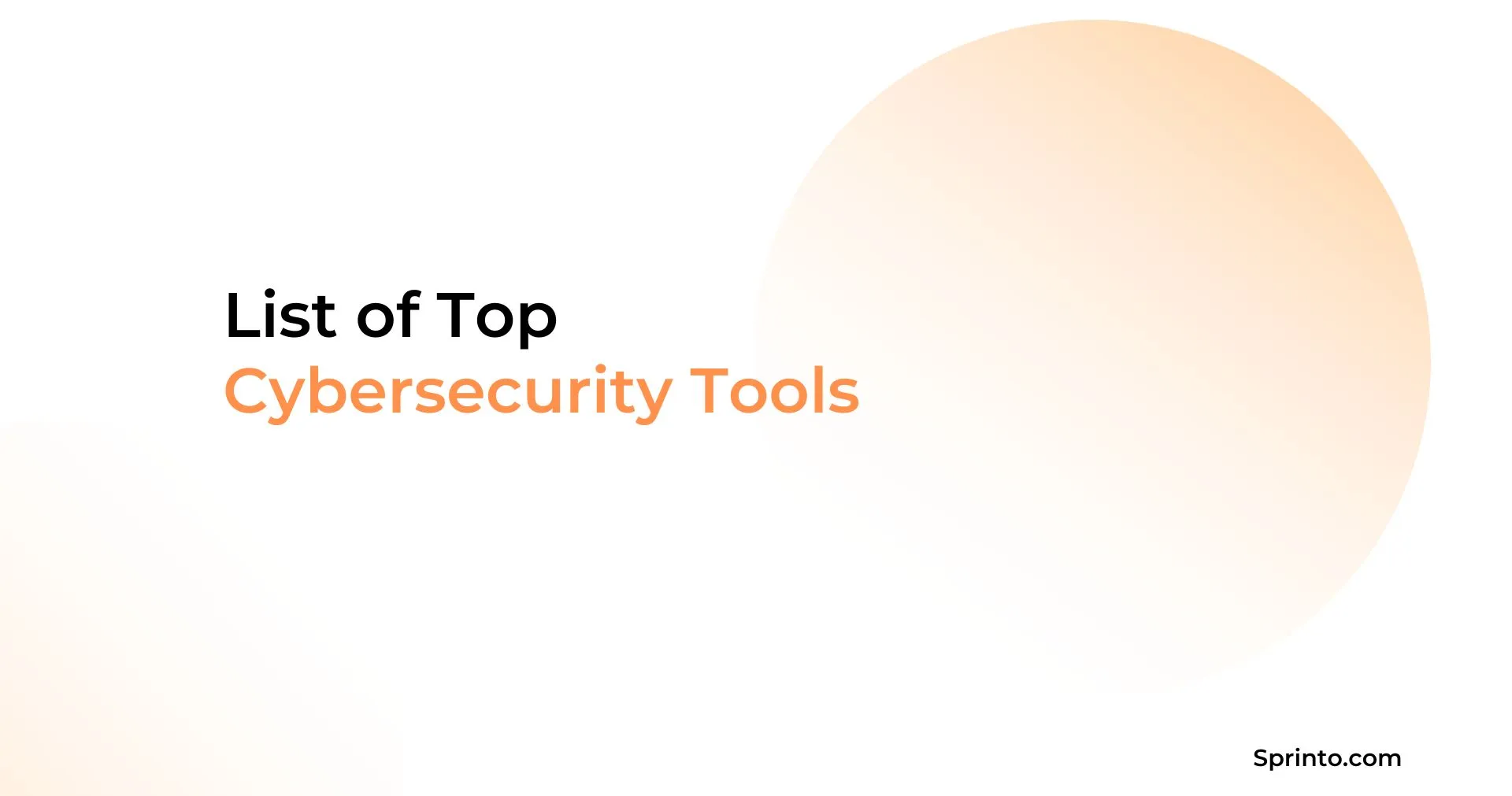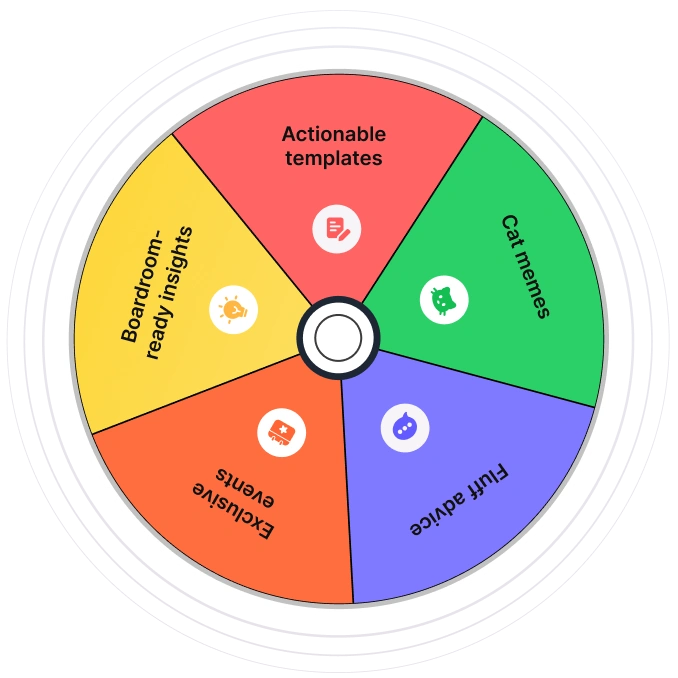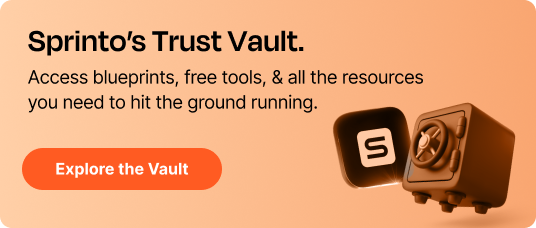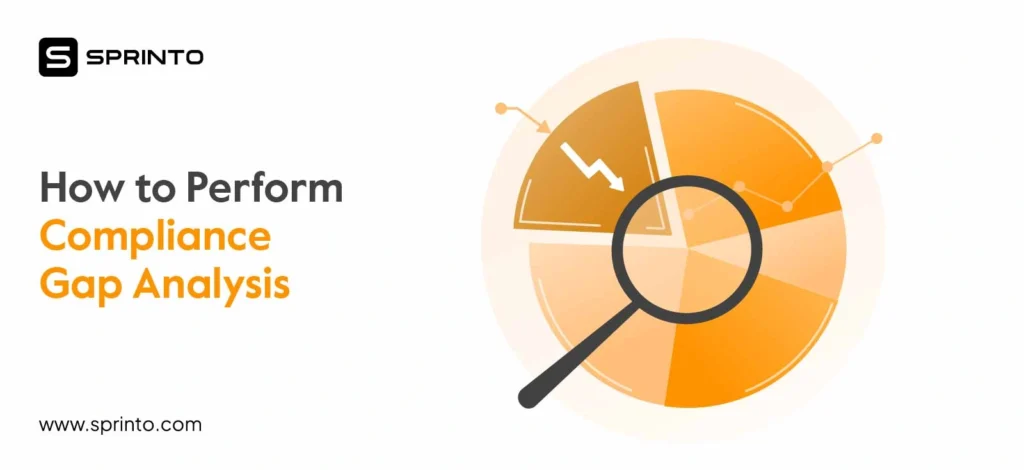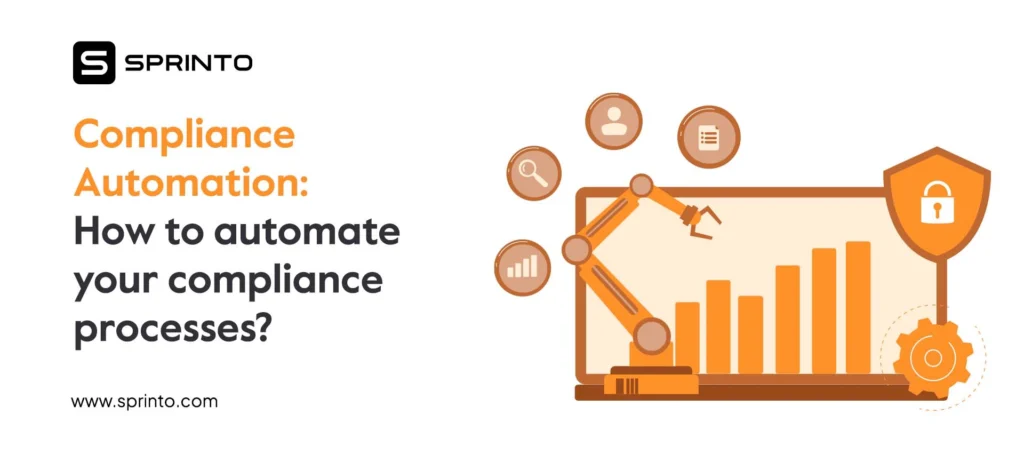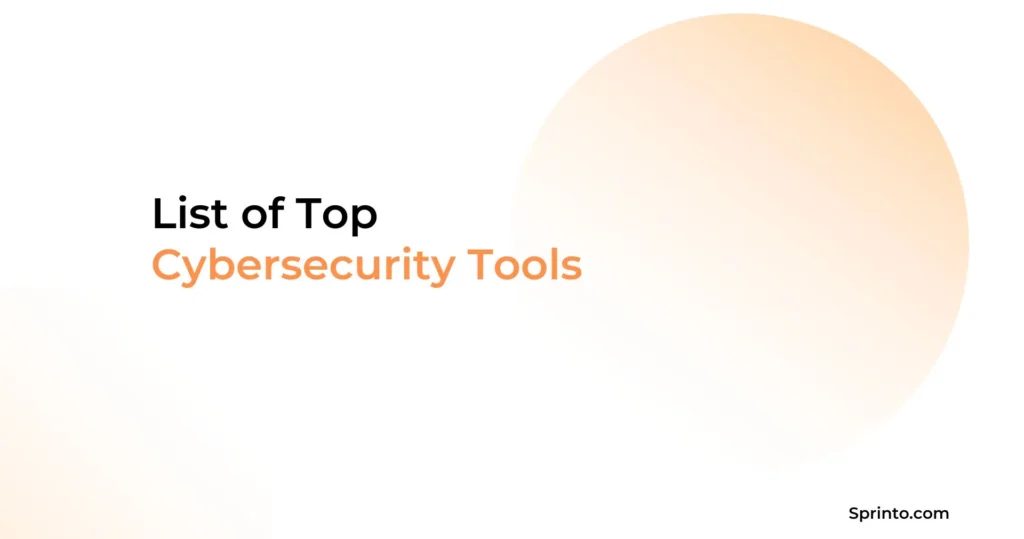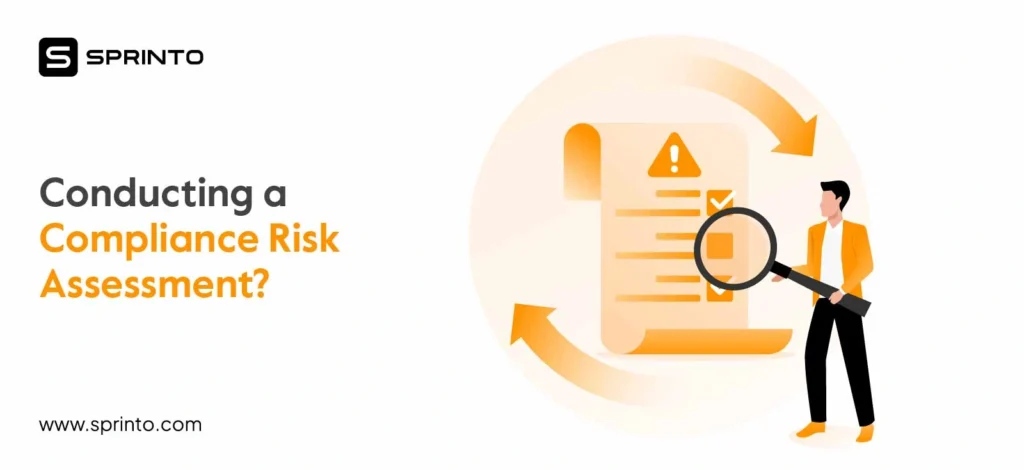Corporations big and small across industry lines are grappling with a more hostile digital landscape. In such an environment, it’s easy to feel overwhelmed by the pressure to protect your systems.
You know you must take security seriously and have the tools and infrastructure to keep threat actors at bay. But choosing the best ones, without spending a fortune, can be a real challenge. Between complex features, technical jargon, and high price tags, where do you even start?
To help with this, we’ve reviewed some of the best options for strengthening cybersecurity without breaking the bank.
TL; DR
| Cybersecurity tools help protect networks and systems from cyber threats and they help you safeguard all types of data against data breaches and loss. |
| We have listed the 16 best cybersecurity tools that we think will help you monitor your cybersecurity posture—Sprinto, Kaol Linux, Cain, Abel, and Metasploit being prominent examples. |
| Safer practices with cybersecurity tools ingrain confidence in an organization’s employees as well as stakeholders and customers. |
Here’s a quick overview of the best cybersecurity tools:
| Tool | Best For |
| Sprinto | Automating compliance and continuous security monitoring |
| Wireshark | Deep network packet analysis |
| Metasploit | Penetration testing and vulnerability research |
| Kali Linux | Penetration testing and security auditing |
| Cain and Abel | Password recovery and Windows vulnerability analysis |
| NMap | Network scanning and vulnerability mapping |
| Nessus Pro | High-speed vulnerability scanning and asset discovery |
| Aircrack-ng | Wi-Fi network security testing and password cracking |
| John the Ripper | Password strength testing and cracking |
| Nikto | Web server vulnerability scanning |
| Tcpdump | Network traffic monitoring via command-line interface |
| KisMAC | Wireless network analysis for macOS |
| NetStumbler | Wireless network detection on Windows |
| Splunk | Real-time threat detection and log analysis |
| Forcepoint | Data loss prevention and user behavior analytics |
| Nexpose | Real-time vulnerability management and risk prioritization |
Our Top Picks

Best all-in-one compliance automation tool

Good for scheduling-related reports

Good for controlling labor costs
25
Tools considered
20
Number of tools reviewed
16
Top picks
How We Chose the Best Cybersecurity Tools
To choose the best cybersecurity tools, we examined what each type of tool is designed to do and, more importantly, how it fits into a broader security strategy.
So we started by looking at the kinds of threats modern organizations face—ransomware, phishing, unauthorized access, web-based attacks, and more. But threats are just one side of the equation. The other side is compliance. Frameworks like SOC 2, ISO 27001, HIPAA, and GDPR demand a certain security maturity level. And that means your tools need to do more than just react; they must prevent and detect as well.
On an overall basis, we evaluated tools based on how effectively they:
- Reduce risk exposure and close known attack vectors
- Support ongoing compliance and audit-readiness
- Integrate with existing tech environments without a heavy lift
- Enable fast detection and response without overwhelming teams
Automate cybersecurity compliance effortlessly
Top 16 Cybersecurity Tools in 2025
The market has a wide variety of options that cater to different aspects of cybersecurity. The key is to find the right tools that match your unique vulnerability surface, risk profile, and business requirements for a clearer view of security and maximum coverage. After consulting with our internal experts and engineers, here are the top 16 cybersecurity tools you should keep an eye on in 2025.
We have identified the following top 16 Cybersecurity tools:
- Wireshark
- Metasploit
- Sprinto
- Kali Linux
- Cain and Abel
- NMap
- Nessus Professional
- Aircrack-ng
- John the Ripper
- Nikto
- Tcpdump
- KisMAC
- NetStumbler
- Splunk
- Forcepoint
- Nexpose
1. Wireshark
Wireshark is an open-source console-based tool used to analyze network protocols. Cybersecurity professionals use it to asses network security weaknesses by continuously capturing and analyzing data packets.
Key features:
- Compatibility across different platforms such as Windows, Linux, OS X, FreeBSD, etc.
- Open-source architecture with relatively easy integration,
- Data is captured and analyzed in real-time data
- Multiple networks and various output formats are supported by decryption protocol supports,
2. Metasploit
Metasploit specializes in penetration testing. It covers a range of security objectives, such as designing strategies to improve the company’s Cyber Security defenses and discovering vulnerabilities in systems and networks, among others.
Key features:
- Tests system security of online and web-based applications, servers, networks, etc.
- Offers capabilities to uncover the slightest emerging weaknesses and provide high-level security around the clock.
- Compatible with a range of different systems, including web-based or online-based applications, networks, and servers, among others.
- Helps evaluate and update IT infrastructure security against vulnerabilities reported earlier.
3. Sprinto
Sprinto is a cybersecurity and compliance automation tool that runs fully automated checks at granular levels to ensure airtight security across functions. It helps scope out security gaps and implement controls to remediate them.
How does Sprinto enable cybersecurity management?
Sprinto supports 100+ integrations with a number of cloud providers, ticketing systems, HRMS tools, etc. We get audit-related read-only permissions for these products.
Based on your active integrations, a list of assets is automatically created, and control checks are run 24×7 on these critical assets. Automatic alerts are raised in case of deviations.
Sprinto ensures you stay ever-vigilant, and the confidentiality, integrity and availability of sensitive data are always maintained.
Check out other essential key features of Sprinto as a cybersecurity tool:
Key features:
- Continuous control monitoring: Ensure implementation of controls like firewalls, encryption, antivirus and more with real-time control monitoring of critical infrastructure
- Access controls: Create, edit, and manage user access privileges to prevent unauthorized access
- Vulnerability assessments:
- Endpoint security: Manage and report endpoint device safety with Sprinto’s baked-in MDM tool Dr Sprinto
- Health dashboards: Verify security and compliance health from a centralized dashboard with a quick snapshot of passing, failing, due and critical checks
- Security Awareness training: Publish built-in security awareness training across the organization for ensuring security best practices
- Policy templates: Leverage out-of-the-box policy templates for navigating through complex security and compliance operations
- Evidence collection: Present automatically collected security compliance evidence to the auditor through the audit dashboard
4. Nmap
Also known as Network Mapper, it is a free and open-source cybersecurity tool in Cyber that scans IT systems and networks to identify security vulnerabilities. Further, it enables professionals to monitor host uptime, map out possible areas of attacks on the network and service, and take significant security actions accordingly.
Key features:
- Nmap is compatible with all popular operating systems,
- Irrespective of the size of the network, it enables experts to scan for vulnerabilities on the web,
- Provides a detailed overview of the activities of the network on a single dashboard, such as the hosts that are connected to the network, the types of packet filters and firewalls deployed to keep the network secure, the operating system it runs on, etc.
5. Kali Linux
Kali Linux is among the most popular and ready-to-use available cybersecurity tools. It offers over 300 tools that companies use to monitor their networking systems for vulnerabilities. The main advantage is that the platform can be modified for experts with different levels of understanding.
Key features:
- Compatible across multiple devices and environments
- Open-source product with easy integration
- Highly useful in security auditing with a specialization in penetration testing
- Contributions and developments from a massive community of users
6. Nessus Professional
Nessus Professional helps improve the integrity of a network. The pro version of Nessus Professional enables admins and security staff to identify potential exploits with this free, open-source vulnerability scanner. The main advantage of the tool is that its database is updated on a daily basis with new threat data.
Key features:
- Remote vulnerability scanning tool offering high-speed asset discovery,
- Easy to deploy and use,
- Tenable’s expert vulnerability research team is always available for support,
- Point-in-time assessments are automated to help quickly identify and fix vulnerabilities,
- Nessus supports Linux, Mac, and Windows operating systems.
7. Aircrack-ng
Aircrack-ng is a free and open-source tool utilized to access the weaknesses of Wi-Fi network security and is a must-have comprehensive suite of wireless tools. The main benefits of this package of tools are monitoring, analyzing, and exporting packets of data, cracking complex Wi-Fi passwords, and spoofing access points.
Key features:
- Easy integration with open-source architecture
- Compatible with most wireless network interface controllers,
- Includes a suite of programs like Airdecap-ng, Airtun-ng, Airodump-ng, and Packetforge-ng,
- Heavy scripting is enabled as all tools are command line based
- Works primarily on Linux but also FreeBSD, macOS, OpenBSD, NetBSD, Windows, as well as Solaris and even eComStation 2.
8. John the Ripper
John the Ripper is a powerful tool for testing the strength of passwords within an organization. It cracks passwords and identifies weak or easily guessable ones that could pose significant security threats.
This tool is especially valuable for organizations looking to proactively secure their systems, as it helps uncover vulnerabilities before malicious actors can exploit them.
Key features:
- Works with a variety of systems, including Windows, Linux, DOS, and OpenVMS systems.
- Identifies complex ciphers and hash-type passwords.
- To make sure the tool provides accurate pen-testing results, the OpenWare community develops and releases continuous updates.
9. Cain and Abel
Cain and Abel are one the oldest cybersecurity tools in the industry that help in identifying the weaknesses in Windows as well as password recovery.
Key features:
- Ability to maintain a record of VoIP communications
- Analyzing routing protocols to figure out if the routed data packets can get compromised.
- Can disclose password boxes and cached passwords, etc.,
- Uses force attacks that help in cracking encrypted passwords.
- Helps in decoding passwords that are scrambled.
10. Nikoto
Nikto, an open-source cyber security tool, is one of the best choices for conducting web vulnerabilities. It scans for web vulnerabilities and fixes them.
Key features:
- It maintains a database with over 6,400 different types of threats that it uses to cross-reference the results of a web vulnerability scan.
- Both web servers and networks are covered.
- Developers frequently update the database with new threat data to counter new vulnerabilities.
- Plugins are constantly updated to ensure the tool remains compatible with various systems.
11. Tcpdump
Tcpdump is mainly used to sniff data packets in a network.
Key features:
- Monitors and logs IP traffic and TCP communicated through a network.
- Offers a command-based software utility to analyze network traffic between the device it is executed in and the network that is routing the traffic.
- It tests and monitors a network’s security by filtering data traffic transferred across or received over the network on a particular interface.
12. KisMAC
KisMAC provides wireless network security specifically for MAC operating systems by scanning wireless networks that are supported on Wi-Fi cards, like airports.
Key features:
- Dedicated to MAC OS software
- PCAP import and export capabilities,
- Features Kismet drone support
- Improves network security by using brute force attacks and the exploitation of weak scheduling,
- Supports many third-party USB devices: Ralink rt2570, Intersil Prism2, rt73, and Realtek rtl8187 chipsets.
13. Netstumbler
Netstumbler is a free cybersecurity tool dedicated to systems running on Windows operating systems. There is no provision of source codes since Netstumbler was developed for Windows systems only.
Key features:
- Netstumbler scans for and identifies available wireless networks in the vicinity, including hidden or less visible ones
- It measures the signal strength of detected wireless networks, which can help in assessing network coverage and detecting areas with weak signals
- The tool identifies whether wireless networks are using encryption (like WEP, WPA, or WPA2)
- Although more basic compared to other tools, Netstumbler can provide rough location data for wireless access points
14. Splunk
A fully automated web vulnerability scanner is perhaps one of the best tools for monitoring network security due to its speed and versatility. Splunk is used to perform historical searches and conduct real-time network analysis to look for threat data.
Key features:
- Data is collected from virtually any source and location,
- A unified user interface makes it a user-friendly tool
- Powerful abilities to unlock data across all parts of the enterprise,
- It can be implemented as a cloud-based platform or on-premise deployment.
15. Forcepoint
Frequently used by network and security admins, Forcepoint helps customize SD-Wan. This way, only authorized users can access specific resource contents. Forcepoints help them track malicious activities within the network. As a result, users can apply the required controls and compliances to fix them later.
It can be deployed on the premises or cloud-based. Cloud implementation blocks servers that pose security threats to the systems. Such a feature helps improve the security management of remote workers.
Key features:
- A high level of security in applications having significant data,
- Seamless integration for fingerprints, policies, and classifiers across all channels
- Intrusions can be blocked with a high level of customization and the probable exploitation of vulnerabilities,
- Provides real-time classification and content analysis,
- Third-party global and cross-portfolio shared threat intelligence network.
16. Nexpose
Nexpose is a vulnerability scanning tool that comes in several forms—whether as a virtual machine, a private cloud option, standalone software, a managed service, or an appliance. Security teams use Nexpose to find and address weak spots in their systems, helping to detect and fix vulnerabilities before they become big problems.
Here’s what Nexpose offers:
- Collect: Get real-time insights into your network’s risk level so you always know where you stand.
- Prioritize: Identify which vulnerabilities need your attention first with detailed risk scores.
- Remediate: Equip your IT team with the information they need to address and resolve issues quickly and efficiently.
Key Features:
- Nexus offers a real-time view and security analysis of everything happening across your network.
- Nexus also helps security teams stay organized by assigning risk scores to different vulnerabilities.
- It keeps its database constantly updated with the latest threat information, so it’s always ready to tackle new types of threats.
Get a wingman for your cybersecurity framework audit
Security is always going to cost you more if you delay things and try to do it later. The cost is not only from the money perspective but also from time and resource perspective
Ayman Elsawah, vCISO, Sprinto
Great advice adds up. Get more from the brightest minds in GRC — Subscribe to our newsletter
Upgrade your cybersecurity game with Sprinto
Effective planning, implementation and risk management help firms assess their businesses’ cyber security. A cyber security audit can help enterprises identify potential gaps and expose vulnerabilities and weaknesses. Further on, after identifying the issues, enterprises must take strategic measures. Safer practices and regulations ingrain confidence in an organization’s employees as well as stakeholders and customers.
Sprinto is an automated security compliance software provider to manages all aspects of compliance from a single dashboard and integrates with any cloud setup.
Check out InfiniteData’s success story with Sprinto. They got the audit ready for SOC 2 and ISO 27001 simultaneously with our advanced adaptive automation capabilities.
Achieve air-tight security compliance to consolidate risk, map entity-level controls, and run the fully-automated checks. Get in touch with us now to learn more.
FAQ
What are Cybersecurity Tools?
Cybersecurity tools cover everything a business uses to stay safe online, from simple antivirus software to network monitoring tools to enterprise-grade platforms that automate compliance. As long as it helps tackle, manage, or alleviate any security risk, it’s considered a cybersecurity tool.
Why is Cybersecurity Important?
Modern businesses run on data, and data attracts threats. A single breach can lead to lost revenue, legal penalties, and permanent reputational damage. But good cybersecurity does more than protect; it enables faster deals, easier audits, and smoother scaling. As regulations like SOC 2, ISO 27001, and HIPAA become standard expectations, cybersecurity isn’t just about defense; it’s also about staying competitive.
What are the Types of Cybersecurity Tools?
Cybersecurity tools fall into four main buckets: prevention, detection, response, and compliance. Firewalls, IAM, and encryption stop threats before they start. SIEMs and threat monitors detect breaches in real time. Backup and response tools help recover quickly. Platforms like Sprinto automate risk tracking, control testing, and audit prep.
How Much Do These Tools Cost?
From open-source utilities to full-scale enterprise platforms, costs can vary dramatically. Basic solutions may run a few hundred dollars annually, while enterprise-grade platforms can exceed six figures. Start by mapping your most significant risks and then invest in tools that directly mitigate them. With growing surging risk volumes, prioritize platforms that automate control monitoring, evidence collection, and risk detection.
Anwita
Anwita is a cybersecurity enthusiast and veteran blogger all rolled into one. Her love for everything cybersecurity started her journey into the world compliance. With multiple certifications on cybersecurity under her belt, she aims to simplify complex security related topics for all audiences. She loves to read nonfiction, listen to progressive rock, and watches sitcoms on the weekends.
Explore more
research & insights curated to help you earn a seat at the table.



